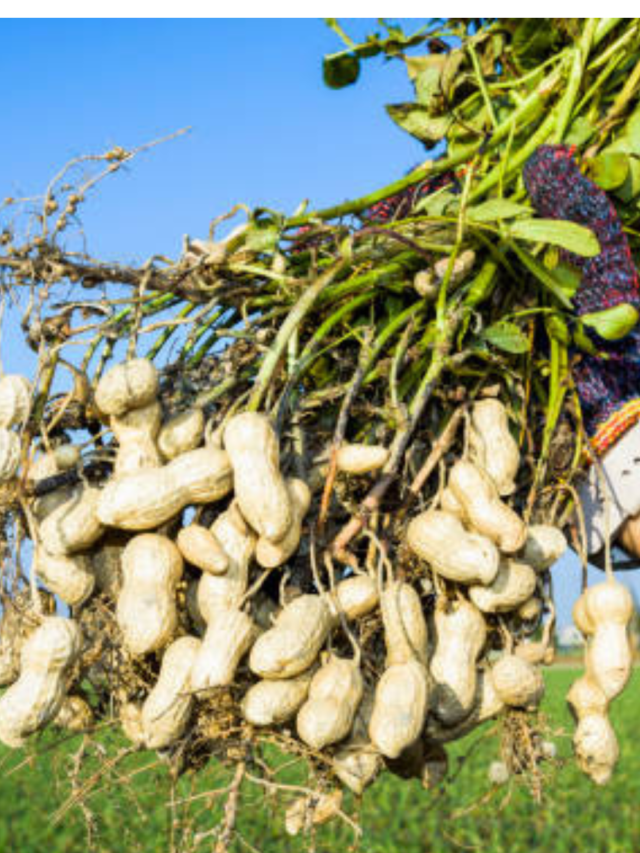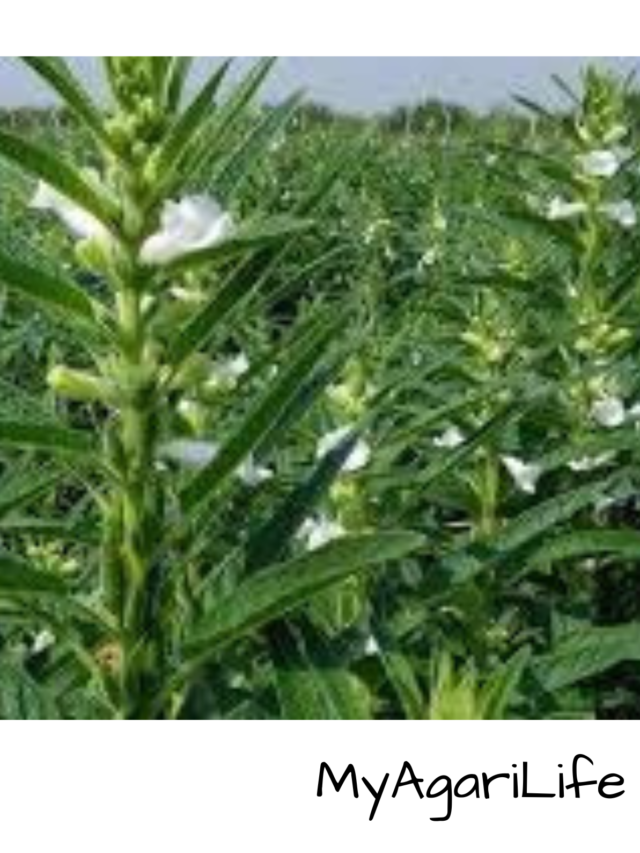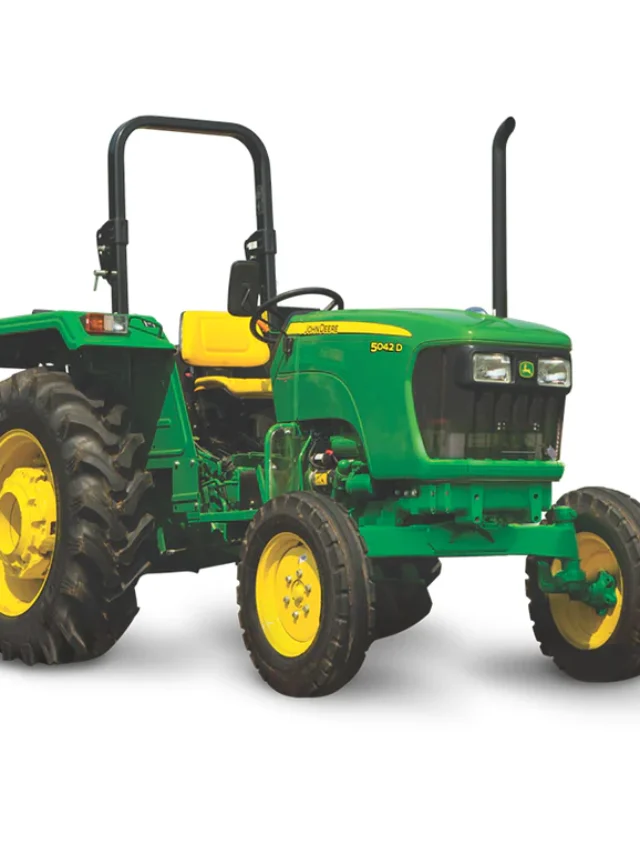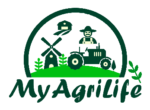Content of Table:
1.Farm Management Software
2.Precision Agriculture Software:
3.Livestock Management Software
4.Crop Monitoring and Scouting Software
5.Weather Forecasting and Climate Analysis Software
6.Financial and Accounting Software
7.Irrigation Management Software
8.Supply Chain Management Software
9.Mobile Applications
10.Farm Analytics and Data Integration Software
Farm Management Software

Farm management software is designed to assist farmers in streamlining and organizing various aspects of their agricultural operations. It typically includes a range of features to help farmers manage tasks such as crop planning, inventory tracking, financial management, equipment maintenance, and more. Here are some key features commonly found in farm management software:
1.Crop Planning and Management: This feature allows farmers to plan and manage their crop rotations, create planting schedules, track seed inventory, manage fertilization and pesticide applications, and monitor crop health and growth.
2.Inventory Management: Farm management software helps farmers keep track of their inventory, including seeds, fertilizers, chemicals, equipment, and other inputs. It enables farmers to monitor stock levels, track usage, and generate reports to optimize inventory management.
3.Financial Tracking and Analysis: This feature helps farmers track expenses, incomes, and profits associated with their farming activities. It allows for budgeting, cost analysis, profit forecasting, and generating financial reports for better financial management.
4.Equipment and Machinery Management: Farm management software often includes tools to track and manage farm equipment and machinery. It helps farmers schedule maintenance, monitor usage, track repairs, and optimize equipment efficiency.
5.Record Keeping and Compliance: The software provides a centralized platform for farmers to maintain important records such as field histories, crop yields, weather data, and compliance documentation. It simplifies regulatory compliance and facilitates data-driven decision-making.
6.Field Mapping and Precision Agriculture: Many farm management software solutions offer field mapping capabilities, allowing farmers to create digital maps of their fields, track soil characteristics, monitor crop performance, and apply precision agriculture techniques for optimized resource allocation.
7.Mobile Accessibility: Some farm management software provides mobile applications, enabling farmers to access and manage their farm data on the go. This allows for real-time monitoring, instant data input, and quick decision-making while in the field.
8.Reporting and Analytics: The software often includes reporting and analytics tools that provide farmers with valuable insights into their operations. It allows them to analyze key performance indicators, identify trends, and make data-driven decisions for improved productivity and profitability.
It’s important to note that farm management software can vary in terms of features, scalability, and pricing. Farmers should consider their specific needs, farm size, and budget when choosing the most suitable solution for their operations.
Precision Agriculture Software
Precision agriculture software is a technology-driven solution that utilizes data analytics, sensors, and geospatial technology to optimize farming practices and increase productivity. It helps farmers make informed decisions by providing precise information about crop health, soil conditions, weather patterns, and resource management. Here are some key features commonly found in precision agriculture software:
1.Crop Monitoring and Analysis: Precision agriculture software enables farmers to monitor crops in real-time using satellite imagery, aerial drones, or ground-based sensors. It helps detect and analyze factors such as plant health, growth rates, nutrient deficiencies, and pest infestations.
2.Variable Rate Application (VRA): This feature allows farmers to apply inputs such as fertilizers, pesticides, and irrigation water at variable rates based on the specific needs of different areas within a field. VRA helps optimize resource utilization, reduce waste, and maximize crop yield.
3.Yield Mapping and Analysis: Precision agriculture software includes tools to collect and analyze data related to crop yields across a field. It generates yield maps that highlight spatial variations in crop performance, helping farmers identify yield-limiting factors and make targeted improvements.
4.Soil Mapping and Analysis: The software utilizes soil sensors and geospatial data to create detailed soil maps that provide information about soil composition, moisture levels, pH, and nutrient content. This data helps farmers make informed decisions about soil management and nutrient application.
5.Weather Monitoring and Forecasting: Precision agriculture software integrates weather data to provide real-time weather monitoring and accurate forecasts. It assists farmers in planning field operations, such as planting, harvesting, and irrigation, based on weather conditions and forecasts.
6.Remote Sensing and Imaging: This feature allows farmers to capture high-resolution images of their fields using satellites or drones. The software processes these images to analyze vegetation indices, identify stress patterns, and detect anomalies, aiding in early detection of potential crop issues.
7.Data Integration and Management: Precision agriculture software consolidates and manages diverse data sets, including sensor data, satellite imagery, historical records, and crop models. It enables farmers to analyze and interpret data effectively, facilitating data-driven decision-making.
8.Farm Equipment Integration: Some precision agriculture software can integrate with farm machinery and equipment, such as GPS-enabled tractors or sprayers. This integration enables automated guidance and variable rate application, improving the efficiency and accuracy of field operations.
9.Mobile Accessibility and Cloud Connectivity: Many precision agriculture software solutions offer mobile applications and cloud-based platforms, allowing farmers to access and manage data from anywhere. This facilitates real-time decision-making and seamless collaboration between team members.
10.Reporting and Analytics: Precision agriculture software provides comprehensive reports and analytics to help farmers gain insights into their operations. It allows for the visualization of data trends, performance indicators, and recommendations for optimizing farming practices.
It’s important for farmers to consider their specific needs, available data sources, and compatibility with existing equipment when selecting precision agriculture software. Integration with other farm management systems and user-friendly interfaces are also key considerations.
Livestock Management Software
Livestock management software is a specialized tool designed to assist farmers and ranchers in efficiently managing their livestock operations. It helps streamline tasks related to herd management, health monitoring, breeding, nutrition, and record-keeping. Here are some key features commonly found in livestock management software.
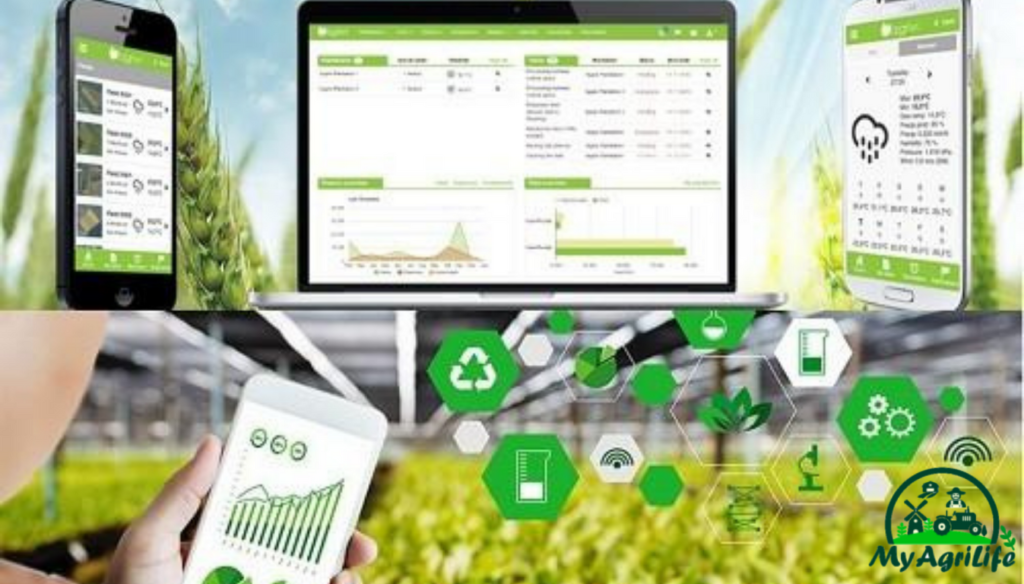
1.Herd Tracking and Identification: The software allows farmers to track and manage individual animals within their herds. It provides tools for assigning unique identification numbers or tags to animals, recording important information such as birth dates, breed, weight, and parentage.
2.Health Monitoring and Treatment: Livestock management software includes features to track and manage the health of animals. It enables farmers to record health events, vaccinations, treatments, and medical histories. Some software solutions provide reminders for upcoming vaccinations or health interventions.
3.Breeding and Reproduction Management: The software helps farmers track breeding cycles, manage mating records, and monitor reproductive performance. It allows for recording breeding dates, pregnancy status, and birth outcomes. It may also include features for managing artificial insemination (AI) programs.
4.Feed and Nutrition Management: Livestock management software often includes tools to create and manage feeding programs. It helps farmers track feed inventories, formulate rations based on animal requirements, monitor feed consumption, and analyze nutritional data.
5.Grazing Management: Some software solutions offer features for managing rotational grazing systems. It assists farmers in planning grazing rotations, monitoring pasture health, and optimizing grazing patterns for improved forage utilization and animal performance.
6.Financial and Economic Analysis: Livestock management software may incorporate financial tracking and analysis tools. It enables farmers to record and analyze costs associated with livestock production, track revenues, and generate reports to evaluate profitability and make informed financial decisions.
7.Record-Keeping and Compliance: The software provides a centralized platform for maintaining comprehensive livestock records. It helps farmers track breeding history, medical treatments, growth rates, and other important data required for regulatory compliance or breed association requirements.
8.Mobile Accessibility: Many livestock management software solutions offer mobile applications or cloud-based platforms, allowing farmers to access and update data in real-time, even when they are in the field. This facilitates convenient data entry, immediate access to information, and efficient communication among team members.
9.Reporting and Analytics: Livestock management software provides reporting and analytics features that help farmers gain insights into herd performance, health trends, reproductive efficiency, and financial metrics. It enables data visualization and analysis to make data-driven decisions and optimize livestock management strategies.
It’s important to note that livestock management software can vary in terms of specific features, integration capabilities, and scalability. Farmers should evaluate their specific needs, herd size, and operational requirements when selecting the most suitable software solution for their livestock management needs.
Crop Monitoring and Scouting Software
Crop monitoring and scouting software is designed to assist farmers in monitoring and assessing the health and condition of their crops. It utilizes various technologies such as remote sensing, image analysis, and data collection to provide real-time insights and help farmers make informed decisions regarding crop management. Here are some key features commonly found in crop monitoring and scouting software:
1.Remote Sensing and Imaging: The software integrates satellite imagery, aerial drones, or ground-based sensors to capture high-resolution images of the crops. Remote sensing helps monitor crop health, detect anomalies, and identify areas of concern within the fields.
2.Image Analysis and NDVI Mapping: Crop monitoring software uses image analysis algorithms to process the captured images and generate vegetation indices such as Normalized Difference Vegetation Index (NDVI). NDVI maps indicate the health and vigor of the crops, highlighting areas that may require further attention.
3.Pest and Disease Detection: The software assists in early detection of pests, diseases, and weed infestations. It analyzes the crop images and identifies signs of pest damage, disease symptoms, or weed growth, allowing farmers to take prompt action to mitigate the impact.
4.Nutrient Management: Crop monitoring software helps farmers assess the nutrient status of the crops. It analyzes the vegetation indices, crop growth patterns, and soil data to determine nutrient deficiencies or excesses. This information enables farmers to make informed decisions regarding fertilization strategies.
5.Growth Stage Monitoring: The software tracks the growth stages of crops throughout the season. It provides information on crop development, flowering, fruiting, and maturation stages, allowing farmers to time their management practices, such as irrigation, fertilization, and harvesting accordingly.
6.Yield Estimation: Crop monitoring software utilizes crop models, historical data, and real-time observations to estimate crop yields. It helps farmers plan for harvest, optimize marketing strategies, and make yield-based decisions.
7.Field Scouting and Notes: The software allows farmers to conduct field scouting activities digitally. Farmers can record observations, take notes, and mark specific areas of concern within the fields. This information can be shared with agronomists or farm workers for collaborative decision-making.
8.Weather Integration: Crop monitoring software often integrates weather data to provide real-time weather conditions, forecasts, and historical weather patterns. Weather information helps farmers understand the impact of weather on crop growth and make decisions related to irrigation, pest control, and other management practices.
9.Mobile Accessibility: Many crop monitoring and scouting software solutions offer mobile applications or cloud-based platforms, allowing farmers to access and update crop data on the go. This facilitates convenient data entry, real-time monitoring, and instant collaboration among team members.
10.Reporting and Analytics: The software provides comprehensive reports, analytics, and visualizations of crop data. It allows farmers to analyze trends, identify patterns, and generate insights for improved crop management and decision-making.
Farmers should consider their specific crop types, farm size, and data integration capabilities when selecting crop monitoring and scouting software. Integration with other farm management systems and user-friendly interfaces are also important factors to consider.
Weather Forecasting and Climate Analysis Software
Weather forecasting and climate analysis software provide farmers with accurate weather predictions and historical climate data to make informed decisions about agricultural practices. These software solutions utilize meteorological data, satellite imagery, and climate modeling techniques to deliver detailed weather forecasts and climate analysis. Here are some key features commonly found in weather forecasting and climate analysis software:

1.Weather Forecasting: The software provides farmers with accurate and up-to-date weather forecasts for their specific locations. It includes information about temperature, precipitation, wind speed and direction, humidity, and other relevant weather parameters. Farmers can use this information to plan field operations, irrigation schedules, and pest control measures.
2.Historical Weather Data: Weather forecasting and climate analysis software offer access to historical weather data for specific regions and time periods. This data helps farmers analyze long-term weather patterns, identify trends, and make informed decisions based on historical climate information.
3.Climate Modeling: Some software solutions incorporate climate modeling capabilities. They use historical climate data and advanced algorithms to generate climate projections and analyze potential impacts on agricultural activities. Farmers can assess the long-term effects of climate change on their crops and adapt their farming strategies accordingly.
4.Agroclimatic Indices: The software may provide agroclimatic indices that help farmers evaluate the suitability of certain crops or determine optimal planting dates. These indices consider factors such as temperature, precipitation, solar radiation, and heat accumulation to assess crop growth potential and determine favorable timeframes for planting or harvesting.
5.Frost and Heat Stress Alerts: Weather forecasting software often includes alerts for frost or heat stress events. Farmers can receive notifications when critical temperature thresholds are expected to be reached, allowing them to take preventive measures to protect their crops.
6.Weather Visualization: The software may offer interactive weather visualizations, such as maps, charts, and graphs, to help farmers understand weather patterns and trends more intuitively. Visual representations can aid in decision-making and communication of weather information.
7.Mobile Accessibility: Many weather forecasting and climate analysis software solutions provide mobile applications or web-based platforms accessible from smartphones or tablets. This allows farmers to access weather information on the go and receive real-time updates, enhancing convenience and flexibility.
8.Integration with Farm Management Systems: Some software solutions integrate with farm management software or equipment, allowing for seamless data exchange and automated decision-making based on weather forecasts. Integration with irrigation systems or automated weather stations can optimize water management practices.
9.Customization and Notifications: Weather forecasting software often allows users to customize their preferences and receive personalized notifications. Farmers can set up alerts for specific weather conditions, such as heavy rain, drought conditions, or severe storms, ensuring they stay informed about potential risks.
Farmers should consider factors such as data accuracy, reliability, user-friendliness, and integration capabilities when choosing weather forecasting and climate analysis software. It’s essential to select a solution that aligns with their specific farming needs and provides the necessary information for efficient and informed decision-making.
Financial and Accounting Software
Financial and accounting software is designed to help farmers and agricultural businesses manage their financial transactions, track expenses and revenues, generate reports, and ensure accurate financial record-keeping. These software solutions provide tools and features to streamline financial processes, improve efficiency, and facilitate informed decision-making. Here are some key features commonly found in financial and accounting software:
1.General Ledger and Chart of Accounts: The software includes a general ledger module that allows users to create and manage a chart of accounts. This feature helps categorize financial transactions and provides a framework for organizing and tracking income, expenses, assets, and liabilities.
2.Accounts Payable and Receivable: Financial and accounting software helps manage accounts payable (vendor invoices, payments) and accounts receivable (customer invoices, receipts). It allows users to track outstanding payments, generate invoices, and reconcile transactions with suppliers and customers.
3.Bank Reconciliation: The software offers bank reconciliation functionality, enabling users to match their financial records with bank statements. This feature helps identify discrepancies, errors, or missing transactions, ensuring accurate financial reporting.
4.Budgeting and Forecasting: Financial software often includes budgeting and forecasting capabilities. It allows users to create budgets, set financial targets, and compare actual performance against projected outcomes. This feature assists in monitoring financial progress and making informed decisions based on financial projections.
5.Financial Reporting: The software generates various financial reports, such as profit and loss statements, balance sheets, cash flow statements, and income statements. These reports provide an overview of the financial health of the farm or business and help assess profitability, liquidity, and financial performance.
6.Tax Management: Financial and accounting software assists in tax management by organizing and tracking relevant financial information. It can generate tax-related reports and provide support for tax preparation processes, ensuring compliance with tax regulations and facilitating smooth tax filing.
7.Inventory Management: Some financial software solutions integrate inventory management features. This allows farmers to track inventory levels, monitor stock movements, and generate reports on inventory valuation. It helps optimize inventory control and ensures accurate financial recording of inventory-related transactions.
8.Fixed Asset Management: The software may include functionality to manage fixed assets, such as farm machinery, vehicles, or buildings. It helps track asset values, depreciation, maintenance schedules, and disposal, facilitating proper asset management and accurate financial reporting.
9.Integration with Bank Accounts and Payment Gateways: Many financial software solutions offer integration with bank accounts and payment gateways. This enables users to streamline financial transactions, import bank statements, and automate payment processes, enhancing efficiency and reducing manual data entry.
10.Security and Data Backup: Financial and accounting software typically includes security features to protect sensitive financial data. It may offer user access controls, data encryption, and regular data backup options to ensure data integrity and security.
When selecting financial and accounting software, farmers should consider factors such as scalability, ease of use, integration capabilities with other systems, and the specific financial needs of their farming operations. It’s important to choose a solution that aligns with the size and complexity of the farm or business and supports the financial processes and reporting requirements effectively.
Irrigation Management Software
Irrigation management software is designed to assist farmers in optimizing their irrigation practices and water usage for agricultural purposes. It helps farmers monitor and control irrigation systems, schedule irrigation events, and make informed decisions regarding water application. Here are some key features commonly found in irrigation management software:
1.Crop-Specific Irrigation Scheduling: The software takes into account crop type, growth stage, soil moisture levels, weather conditions, and other factors to generate optimized irrigation schedules. It helps farmers determine when and how much water to apply to their crops, reducing water waste and improving water use efficiency.
2.Soil Moisture Monitoring: Irrigation management software integrates with soil moisture sensors or other monitoring devices to collect real-time data on soil moisture content. It provides information about the moisture status of the soil, enabling farmers to make data-driven decisions regarding irrigation timing and duration.
3.Weather Integration: The software incorporates weather data, including temperature, precipitation, humidity, and evapotranspiration rates, to help farmers assess crop water requirements accurately. It adjusts irrigation schedules based on current and forecasted weather conditions, optimizing irrigation efficiency.
4.Automated Irrigation Control: Some irrigation management software solutions offer integration with irrigation control systems. It enables automated control of irrigation valves, pumps, and other equipment based on predefined schedules or sensor readings, reducing manual intervention and ensuring precise water application.
5.Water Flow Monitoring: The software tracks and records water flow rates and usage, allowing farmers to monitor water consumption and detect potential leaks or inefficiencies in the irrigation system. It provides insights into water usage patterns and facilitates water management decisions.
6.Water Resource Management: Irrigation management software assists farmers in managing water resources effectively. It helps track water sources, permits, allocation, and usage, ensuring compliance with water regulations and optimizing water allocation across different fields or zones.
7.Irrigation Analytics and Reporting: The software provides analytics and reporting features to help farmers evaluate irrigation performance and water use efficiency. It generates reports on irrigation events, water consumption, soil moisture trends, and other key metrics, enabling farmers to identify areas for improvement and make informed decisions.
8.Mobile Accessibility: Many irrigation management software solutions offer mobile applications or web-based platforms accessible from smartphones or tablets. This allows farmers to monitor and control their irrigation systems remotely, receive real-time alerts, and make adjustments on the go.
9.Integration with Other Farm Management Systems: Some irrigation management software solutions integrate with other farm management systems, such as crop monitoring, weather forecasting, or field mapping software. Integration allows for seamless data exchange and provides a holistic view of farm operations for more comprehensive decision-making.
10.Scalability and Adaptability: It’s important for farmers to consider the scalability and adaptability of the irrigation management software to their specific farm size, irrigation infrastructure, and future expansion plans. The software should be able to accommodate changing needs and integrate with different irrigation technologies and equipment.
Farmers should evaluate their specific irrigation requirements, available technology, and integration capabilities when selecting irrigation management software. It’s essential to choose a solution that aligns with their irrigation goals, improves water efficiency, and helps achieve optimal crop health and productivity.
Supply Chain Management Software
Supply chain management (SCM) software is designed to streamline and optimize the processes involved in the flow of goods, information, and finances across the entire supply chain. It helps businesses manage their inventory, track orders, coordinate logistics, and enhance collaboration with suppliers and customers. Here are some key features commonly found in supply chain management software:
1.Inventory Management: SCM software provides tools for efficient inventory management, including inventory tracking, stock level monitoring, and demand forecasting. It helps businesses maintain optimal inventory levels, reduce stockouts and overstocking, and improve order fulfillment.
2.Order Processing and Fulfillment: The software streamlines the order processing and fulfillment process by automating order capture, tracking, and delivery. It enables businesses to manage order status, track shipments, and ensure timely and accurate order fulfillment.
3.Supplier Relationship Management: SCM software facilitates effective communication and collaboration with suppliers. It helps manage supplier information, track supplier performance, and streamline procurement processes. Some software solutions also support electronic data interchange (EDI) for seamless data exchange with suppliers.
4.Demand Planning and Forecasting: The software incorporates demand planning and forecasting capabilities, using historical data, market trends, and customer insights to predict future demand. It assists businesses in aligning their production, procurement, and inventory management strategies to meet customer demand efficiently.
5.Logistics and Transportation Management: SCM software includes features for managing logistics and transportation operations. It helps optimize route planning, carrier selection, and shipment tracking. It may also provide visibility into real-time transportation data and facilitate coordination among different parties involved in the supply chain.
6.Warehouse Management: The software offers warehouse management features to optimize warehouse operations. It assists in managing receiving, putaway, picking, packing, and shipping processes. It may include functionalities such as barcode scanning, real-time inventory tracking, and warehouse layout optimization.
7.Supply Chain Analytics and Reporting: SCM software provides analytics and reporting capabilities to gain insights into supply chain performance. It generates reports on key performance indicators (KPIs), such as order fulfillment rates, inventory turnover, lead times, and supplier performance. This information helps businesses identify bottlenecks, track performance, and make data-driven decisions.
8.Collaboration and Communication: The software facilitates collaboration and communication among different stakeholders in the supply chain. It may include features for sharing real-time information, communicating order updates, and managing supplier relationships. Some software solutions offer a portal or platform for secure collaboration with suppliers and customers.
9.Integration with Other Systems: SCM software often integrates with other business systems, such as enterprise resource planning (ERP) software, customer relationship management (CRM) software, or e-commerce platforms. Integration allows for seamless data exchange and provides a unified view of business operations.
10.Scalability and Customization: Businesses should consider the scalability and customization options of SCM software to ensure it can adapt to their evolving needs and accommodate growth. The software should be flexible enough to support different industry verticals and supply chain complexities.
When selecting supply chain management software, businesses should evaluate their specific supply chain requirements, consider the level of integration needed, and assess the software’s compatibility with existing systems. It’s crucial to choose a solution that enhances efficiency, improves visibility, and enables effective coordination and collaboration across the entire supply chain.
Mobile Applications
Mobile applications, commonly referred to as mobile apps, are software applications designed to run on mobile devices such as smartphones and tablets. These apps are typically downloaded and installed from app stores, providing users with a wide range of functionalities and services. Here are some common types and features of mobile applications:
1.Social Networking Apps: Social networking apps such as Facebook, Instagram, and Twitter enable users to connect with friends, share content, and engage in online communities.
2.Communication Apps: Communication apps like WhatsApp, Skype, and Slack facilitate instant messaging, voice and video calls, and group collaboration.
3.Entertainment Apps: Entertainment apps include streaming platforms like Netflix and YouTube, as well as gaming apps, music apps, and digital book readers.
4.Productivity Apps: Productivity apps such as note-taking apps (Evernote), task management apps (Todoist), and calendar apps (Google Calendar) help users organize and optimize their work and personal tasks.
5.E-commerce Apps: E-commerce apps like Amazon and eBay allow users to browse and shop for products, track orders, and make secure online payments.
6.Health and Fitness Apps: Health and fitness apps monitor and track users’ physical activities, provide workout routines, offer nutrition advice, and track health data like heart rate and sleep patterns.
7.Travel and Navigation Apps: Travel and navigation apps like Google Maps, TripAdvisor, and Airbnb assist users in finding locations, booking accommodations, exploring attractions, and navigating unfamiliar places.
8.Financial Apps: Financial apps offer banking services, budgeting tools, investment tracking, and mobile payment options. Examples include banking apps, payment wallets (PayPal, Venmo), and investment management apps (Robinhood, Acorns).
9.Education Apps: Education apps provide access to online courses, language learning, educational games, and academic resources. Platforms like Duolingo, Khan Academy, and Coursera fall into this category.
10.Utility Apps: Utility apps encompass a wide range of applications that offer specific functionalities such as file management, photo editing, barcode scanning, weather forecasting, and language translation.
Mobile applications can vary in terms of platform compatibility (iOS, Android), pricing models (free, freemium, paid), and targeted user demographics. They leverage the capabilities of mobile devices, including touchscreens, GPS, cameras, and sensors, to deliver personalized and interactive user experiences.
Developers create mobile apps using programming languages such as Java, Swift, or JavaScript frameworks like React Native or Flutter. They undergo testing, optimization, and regular updates to ensure performance, security, and compatibility with evolving mobile operating systems.
Overall, mobile applications have transformed the way we access information, communicate, and perform various tasks, offering convenience and enhancing productivity in our daily lives.
Farm Analytics and Data Integration Software
Farm analytics and data integration software help farmers collect, manage, and analyze agricultural data from various sources to make data-driven decisions and optimize farm operations. These software solutions provide tools and features to gather data from sensors, machinery, weather stations, and other sources, integrate that data into a centralized platform, and extract valuable insights. Here are some key features commonly found in farm analytics and data integration software:
1.Data Collection and Integration: The software enables farmers to collect data from multiple sources, such as IoT sensors, satellite imagery, machinery, and manual inputs. It integrates data from these disparate sources into a unified platform, ensuring data consistency and facilitating analysis.
2.Centralized Data Storage: Farm analytics software provides a centralized database or cloud-based storage system to securely store and manage agricultural data. It ensures data accessibility, reliability, and scalability.
3.Data Visualization and Dashboards: The software offers visualizations and customizable dashboards that present data in a user-friendly and interactive manner. Farmers can create charts, graphs, maps, and other visual representations to gain insights and monitor key metrics.
4.Advanced Analytics: Farm analytics software includes advanced analytics capabilities, such as data mining, machine learning, and predictive analytics. It allows farmers to uncover patterns, trends, and correlations in the data, enabling better decision-making and forecasting.
5.Crop and Field Monitoring: The software assists in monitoring crop growth, field conditions, and pest and disease outbreaks. It combines data from sensors, satellite imagery, and historical records to provide real-time insights into crop health, growth stages, and potential risks.
6.Yield Monitoring and Analysis: Farm analytics software helps track and analyze crop yields across different fields or zones. It provides yield maps, performance metrics, and historical yield data, helping
References
1.AgWeb: https://www.agweb.com/
AgWeb is a leading agricultural news and information website that provides articles, resources, and industry insights. They cover various topics related to agricultural technology, including software solutions.
2.PrecisionAg: https://www.precisionag.com/
PrecisionAg is a dedicated platform for precision agriculture and technology. They offer articles, news, events, and resources related to agricultural software, precision farming, and data-driven agriculture.
3.AgFunderNews: https://agfundernews.com/
AgFunderNews is a platform that covers the latest developments and trends in agricultural technology and investment. They feature articles, reports, and analysis on various agricultural software solutions and their impact on the industry.
4.Successful Farming: https://www.agriculture.com/
Successful Farming is a trusted source of agricultural information, offering articles, videos, tools, and resources for farmers. They provide insights and reviews on different agricultural software solutions.
5.AgriMarketing: https://www.agrimarketing.com/
AgriMarketing focuses on marketing and communication in the agricultural industry. They provide news, articles, and resources related to agricultural software solutions, including marketing and data management tools.
6.Farm Industry News: https://www.farmprogress.com/
Farm Industry News covers the latest advancements and technologies in the agriculture sector. They offer articles, reviews, and updates on agricultural software solutions and their applications.



